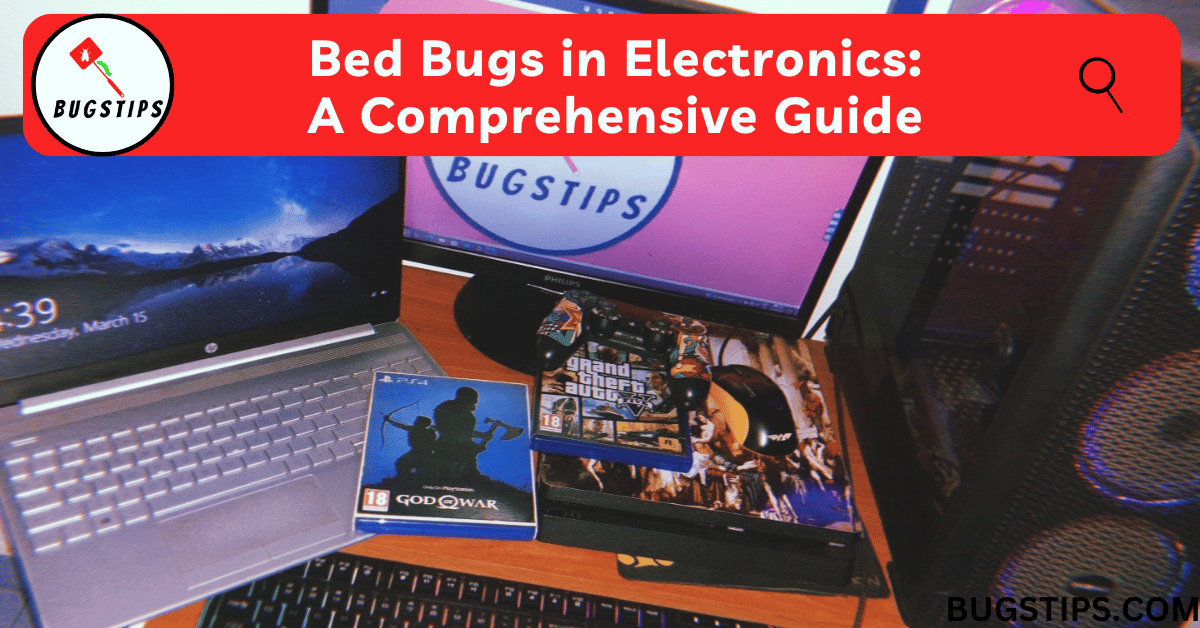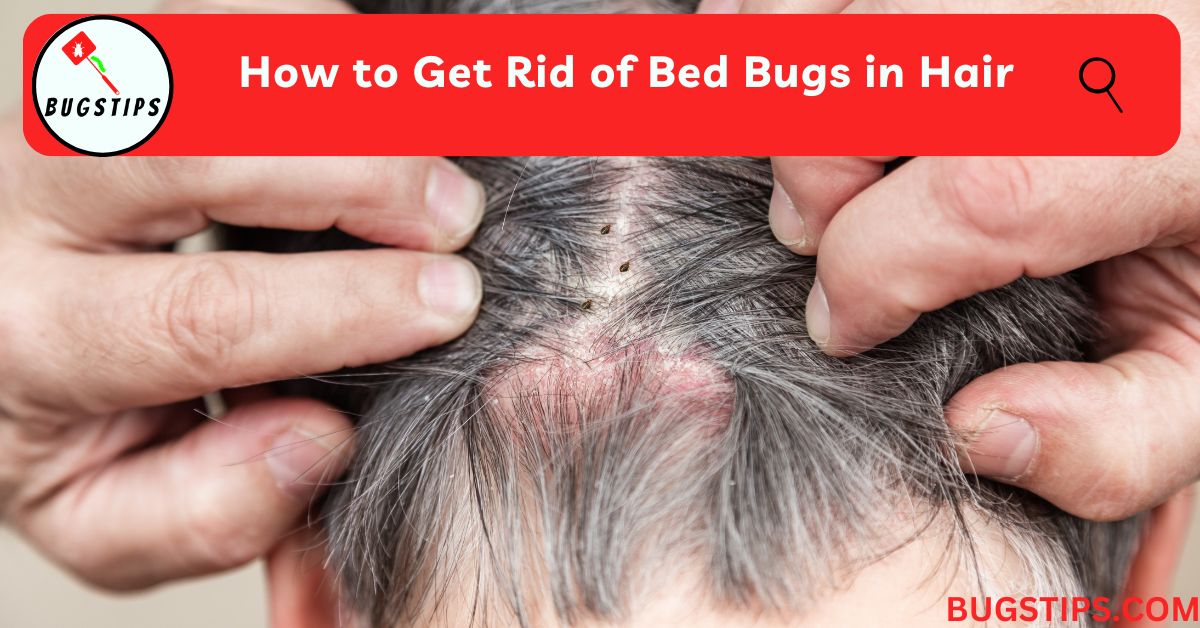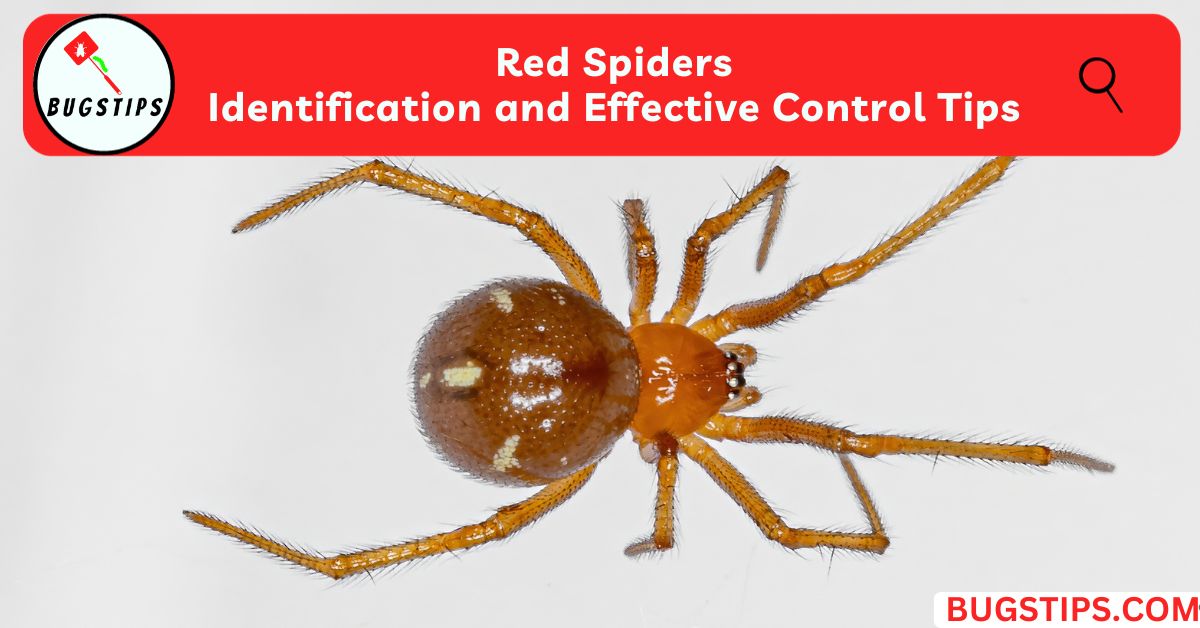This post may contain affiliate links which means as an Amazon Associate, this site may earn a small commission on qualified purchases made through links at no extra cost to you. Learn more on Affiliate Disclosure
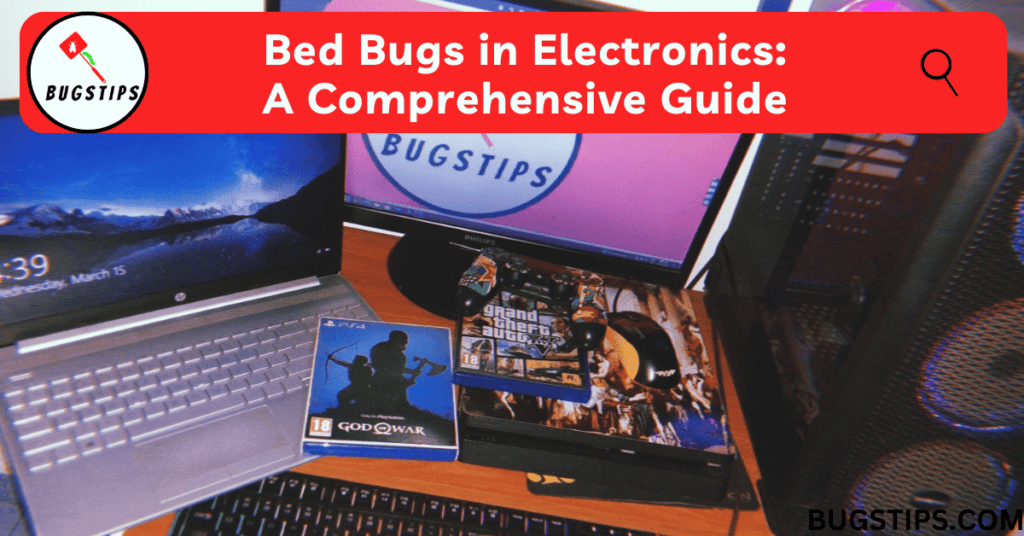
Have you ever wondered if bed bugs can infest your electronic devices? The answer is yes. Bed bugs can live in almost any nook and cranny, and electronic devices are no exception. From phones and laptops to televisions and refrigerators, these pesky pests can make their home just about anywhere. But how do bed bugs end up in your electronics, and what kind of damage can they cause?
Bed bugs are notorious hitchhikers and can easily attach themselves to clothing, bags, and even electronic devices. They can enter your home in a variety of ways, such as through luggage, used furniture, or even public transportation. Once they find their way into your home, they can quickly infest any area, including your electronics.
The damage bed bugs can cause in electronics ranges from minor inconveniences, like a disrupted WiFi signal, to more serious issues, like short-circuiting and overheating. In this article, we will discuss how to detect and treat bed bugs in electronics, as well as preventative measures you can take to keep your electronic devices bed bug-free.
Likelihood of Bed Bugs in Electronics
Bed bugs are known for their uncanny ability to infest just about any object they can find, including electronic devices. In fact, bed bugs can hide in electronics and cause a host of problems for homeowners who don’t realize they have an infestation until it’s too late. But how exactly do bed bugs end up in electronics in the first place?
Factors that attract bed bugs to electronics can include heat, moisture, and the presence of humans. Electronic devices can generate heat and emit carbon dioxide, which are both attractive to bed bugs. Bed bugs are also attracted to moisture, which can be found in areas where electronics are often used, such as in bathrooms and kitchens.
Related Article – Found One Bed Bug But No Others?
Do Bed Bugs Hide in Electronics?
Bed bugs are sneaky pests that can hide in various parts of electronic devices. In fact, they can squeeze into the tiniest of spaces, making it difficult to detect and eradicate them from your electronics. It’s important to thoroughly inspect your electronic devices for bed bugs to prevent an infestation from spreading.
Some common parts of electronics where bed bugs can hide include crevices, cracks, and seams. Bed bugs may also hide in the ports and connectors of electronic devices. For example, they can crawl inside the charging ports of phones or laptops and lay their eggs there. Bed bugs can also hide in the battery compartments or beneath the circuit boards of electronic devices.
How Do Bed Bugs End Up in Electronics?
Bed bugs can end up in electronics in a number of ways. They may crawl into the device from nearby furniture or bedding, or they may hitch a ride on a person’s clothing or belongings. Bed bugs can also be introduced into a home through secondhand electronics that were previously infested with pests.
Once inside an electronic device, bed bugs can hide in small crevices and cracks where they can lay eggs and multiply. This can lead to a larger infestation that can be difficult to detect and treat. In addition, bed bugs can damage electronics by leaving behind fecal stains and corroding internal components.
To prevent bed bugs from infesting your electronics, it’s important to be aware of the signs of an infestation and take steps to keep your home free of these pests.
What Types of Electronics Are Most Vulnerable to Bed Bug Infestations?

Bed bugs are notorious for their ability to hide in small spaces, making it difficult to detect and eliminate them. They can quickly infest a home and survive for months without feeding. One of the most surprising places where bed bugs can be found is in electronic devices. These pests can hide in small spaces within electronic devices, making it challenging to spot them.
When it comes to bed bugs in electronics, no device is completely safe from infestation. Bed bugs can hide and thrive in a wide range of electronics, making it essential to be aware of the risks. It’s crucial to take preventive measures to reduce the likelihood of bed bugs infesting your electronic devices.
Let’s take a closer look at some common electronic devices that bed bugs tend to infest. These devices include but are not limited to computers, laptops, phones, televisions, radios, and speakers. Other electronic devices like vacuum cleaners, refrigerators, and washing machines can also be a hiding spot for bed bugs.
- Computers and Laptops: Bed bugs can easily hide in the small crevices of computers and laptops, especially around the keyboard and monitor. They can also hide inside the computer towers, where the heat generated by the device provides them with the ideal environment for survival.
- Televisions: Bed bugs can also hide inside the TV sets, particularly in the seams and folds of the device’s casing. They can also take refuge in the remote controls, where the buttons provide them with small crevices to hide.
- Gaming Consoles: Gaming consoles, such as Xbox and PlayStation, can provide an ideal hiding place for bed bugs. These devices often have vents and ports that bed bugs can crawl into and make their homes.
- Speakers: Bed bugs can easily find their way into speakers and hide in the small crevices, especially around the speaker cones and the mesh coverings.
- Alarm Clocks: Bed bugs can also hide in alarm clocks, particularly in the crevices around the clock’s casing, buttons, and snooze button.
- Vacuum Cleaners: While vacuum cleaners may seem like a safe haven from bed bugs, the truth is that they can actually live inside the vacuum cleaner itself. Bed bugs can cling to the brushes and filters, and even lay eggs inside the dust bag.
- Phones and Tablets: With the rise of mobile devices, bed bugs have found a new home in our phones and tablets. The warmth and dark spaces inside these devices make them attractive spots for bed bugs to hide and breed.
- Electronics with Gaps and Crevices: Devices that have gaps and crevices, such as computers, keyboards, printers, and televisions, are prime targets for bed bug infestations. Bed bugs can easily crawl into these small spaces and hide undetected.
- Kitchen Appliances: Even kitchen appliances like refrigerators, microwaves, and toasters are not immune to bed bug infestations. Bed bugs can crawl into the small spaces and crevices of these appliances, and even into the electrical components.
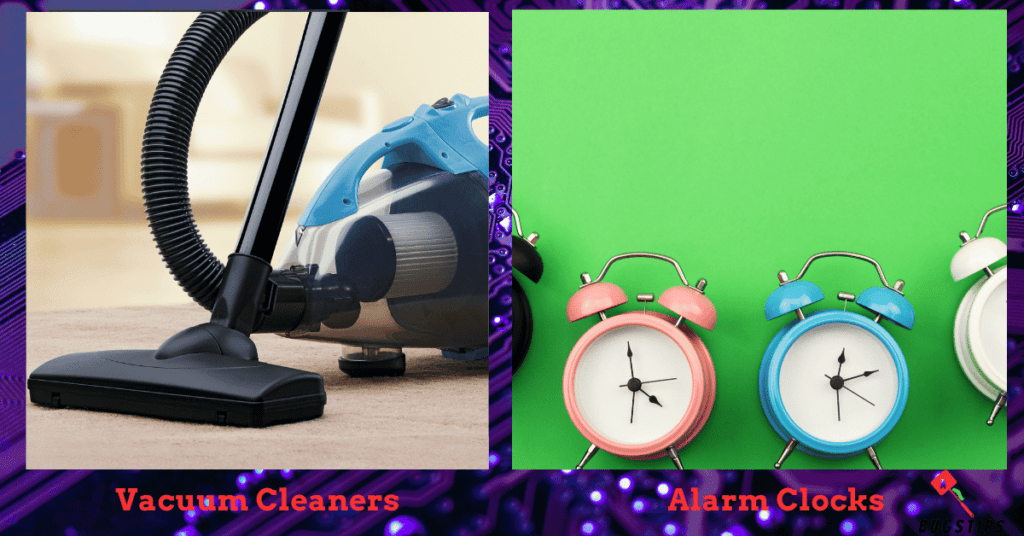
Can Bed Bugs Damage Your Electronic Devices?
While bed bugs are unlikely to directly damage your electronic devices, they can cause problems that could lead to costly repairs or replacements. One of the main ways bed bugs can cause damage is through their fecal matter, which can stain and clog electronics. As they move around and hide in tight spaces, they can also displace delicate wiring and components, leading to malfunctions.
In addition to physical damage, bed bugs can also pose a risk to your health if they are living and breeding in your electronics. The shedding of their skins and droppings can trigger allergies and respiratory problems. In rare cases, prolonged exposure to bed bugs can even lead to anemia.
If you suspect that your electronic devices have been infested with bed bugs, it’s important to take swift action to prevent any further damage or health risks.
How to Identify Signs of Bed Bug Infestation in Electronics
If you suspect that bed bugs have infested your electronics, it’s important to identify the signs of infestation as soon as possible. The longer you wait, the more time the bed bugs have to cause damage to your devices. Some common signs of bed bug infestation in electronics include the presence of live bed bugs, small brown or black spots, and the shedding of bed bug skin.
To detect bed bugs in electronics, you can use heat or cold treatments. Bed bugs are sensitive to temperature changes, so exposing them to high or low temperatures can be an effective way to detect their presence. Placing electronics in a plastic bag and leaving them in a hot car or exposing them to freezing temperatures in a freezer for a few hours can be effective in detecting bed bugs.
There are also various tools and techniques you can use to detect bed bugs in electronics. A flashlight and magnifying glass can be used to inspect the surface of your electronic devices for signs of bed bugs, such as tiny eggs or live bugs.
You can also use sticky traps, which are designed to attract and trap bed bugs, to determine if they are present in your electronics. Additionally, using a bed bug detector dog or hiring a professional pest control company can be an effective way to detect bed bugs in electronics.
To thoroughly inspect electronic devices for bed bugs, follow these steps:
- Unplug the device and take it to a well-lit area.
- Use a flashlight to inspect all crevices, cracks, and seams.
- Look for live bed bugs, shed skins, and fecal matter (dark spots).
- Use a stiff brush to scrub the device’s surface and dislodge any bed bugs or eggs.
- Vacuum the device thoroughly using a crevice tool to reach any hidden areas.
- After vacuuming, dispose of the vacuum bag or empty the canister into a sealed plastic bag.
- If you suspect an infestation, consider using a bed bug detector or calling a professional exterminator.
It’s essential to inspect all parts of the device thoroughly, including ports, buttons, and hinges. Pay special attention to areas where the device comes in contact with your body, such as the keyboard and mouse of a computer or the earpiece of a phone.

Keep in mind that bed bugs can be challenging to spot, and it may take multiple inspections to confirm an infestation. If you’re unsure whether your electronic device has bed bugs, consider using a bed bug detector to provide a more definitive answer.
How to Treat Electronics for Bed Bugs
Heat Treatment
Heat treatment is an effective method for eliminating bed bugs in electronics. Bed bugs cannot tolerate high temperatures, and exposing infested electronic devices to heat can effectively kill them. Heat treatment typically involves placing electronic devices in a sealed container and exposing them to high temperatures for a specific period of time. The exact time and temperature required for heat treatment may vary depending on the device and the severity of the infestation.
Precautions to take when using heat treatment on electronics include ensuring that the device is unplugged and that all batteries have been removed before exposing it to heat. Additionally, it is important to monitor the temperature closely and avoid exposing devices to temperatures that may cause damage.
ZappBug Heater
The ZappBug Heater is a portable heat treatment device that can effectively eliminate bed bugs in various electronic devices. It uses convective heat to raise the temperature inside the device and kill bed bugs and their eggs. The ZappBug Heater can reach temperatures up to 120°F, which is lethal to bed bugs at all stages of development.
To use the ZappBug Heater on electronics, simply place the devices inside the heater and turn it on. The heat will penetrate deep into the devices, killing bed bugs and their eggs in all the hidden crevices. The ZappBug Heater is safe to use on a wide range of electronic devices, including laptops, phones, and gaming consoles.
When using the ZappBug Heater on electronics, it is important to follow the manufacturer’s instructions carefully. Some electronic devices may be more sensitive to heat than others, and the excessive heat can cause damage. Therefore, it is recommended to monitor the temperature inside the device closely and use a thermometer to ensure that the temperature stays within safe limits.
It is also important to ensure that the devices are properly prepared before placing them inside the ZappBug Heater. Any loose items inside the devices, such as batteries or memory cards, should be removed, as they may be damaged by the heat. Additionally, the devices should be cleaned and wiped down to remove any dust or debris that may interfere with the heat treatment.
Bagging
Bagging is another effective method for eliminating bed bugs in electronics. The process involves sealing the infested device in a plastic bag and leaving it for an extended period of time. The lack of oxygen inside the bag will eventually kill the bed bugs.
Best practices for bagging electronic devices include sealing the bag tightly and leaving it undisturbed for several weeks. It is important to note that this method may not be suitable for all types of electronic devices, as some may require ventilation.
Nuvan ProStrips
Nuvan ProStrips is a pesticide treatment designed specifically for use in enclosed spaces such as drawers, closets, and storage containers. They contain a controlled-release pesticide that can effectively kill bed bugs in electronic devices. The strips are placed in a sealed container along with the infested device and left for a specific period of time.
Precautions to take when using Nuvan ProStrips on electronics include following the manufacturer’s instructions carefully and ensuring that the device is properly sealed and isolated during treatment. It is also important to allow the device to air out after treatment before using it again.
Vacuuming
Vacuuming is a simple but effective method for eliminating bed bugs in electronics. A vacuum cleaner with a crevice tool attachment can be used to remove bed bugs and their eggs from small crevices and hard-to-reach areas.
Best practices for vacuuming electronic devices include using a low-suction setting and a soft-bristled attachment to avoid causing damage to the device. It is also important to empty the vacuum cleaner’s contents outside and away from the home to prevent bed bugs from reinfesting the area.
Neem Oil
Neem oil is a natural insecticide that can be used to eliminate bed bugs in electronics. It works by disrupting the bed bugs’ reproductive system, preventing them from laying eggs and reproducing.
Precautions to take when using neem oil on electronics include diluting it with water to avoid causing damage to the device. It is also important to avoid applying neem oil to the device’s electrical components.
Tape and Drowning
Tape and drowning is a simple and inexpensive method for eliminating bed bugs in electronics. The process involves wrapping the device in sticky tape, which traps the bed bugs and then submerging the device in water to drown them.
Best practices for using tape and drowning on electronic devices include using waterproof tape and ensuring that the device is completely submerged in water. It is important to note that this method may not be suitable for all types of electronic devices.
Fumigating
Fumigation is a powerful way to eliminate bed bugs in electronics. It involves exposing the affected devices to a fumigant, which is a chemical that kills bed bugs on contact. Fumigation is best carried out by a professional exterminator, as the process requires specialized equipment and knowledge of proper safety procedures.
During the fumigation process, the electronic devices are sealed in an airtight container along with the fumigant. The fumigant will kill the bed bugs, but it will also leave behind residue on electronic devices. It is essential to air out the devices and clean them thoroughly after fumigation to remove any residue that could damage the electronics or pose a health hazard to humans.
When fumigating electronics, it is crucial to follow all safety guidelines and recommendations from the manufacturer of the fumigant being used. This includes wearing protective clothing and using proper ventilation to avoid inhaling the fumigant.
How to Safely Use Bed Bug Prevention Products on Electronics
Bed bug prevention products can be effective in preventing infestations, but they can also potentially damage your electronics. Here are some tips to safely use bed bug prevention products on your electronic devices:
- Avoid Direct Contact: When using bed bug sprays, powders, or other insecticides, avoid applying them directly to your electronic devices. Instead, apply the products to areas around the electronics or use them in a well-ventilated area.
- Choose Safe Products: Look for bed bug prevention products that are specifically labeled as safe for use on electronic devices. Avoid using products that contain harsh chemicals or ingredients that can damage electronics.
- Read Instructions Carefully: Before using any bed bug prevention product, carefully read the instructions and warnings to ensure that you are using the product safely and effectively.
- Test Before Use: Before applying any bed bug prevention product to your electronics, test a small, inconspicuous area to ensure that it does not cause any damage or discoloration.
- Monitor Your Devices: Keep an eye on your electronic devices after using bed bug prevention products. If you notice any signs of damage or malfunction, discontinue use immediately.
By following these best practices, you can safely use bed bug prevention products on your electronic devices without causing damage or harm.
Home Remedies for Treating Bed Bugs in Electronics
While professional treatment methods are typically the most effective way to eliminate bed bugs in electronics, there are several home remedies that you can try. However, it’s important to note that these remedies may not be as effective as professional treatments, and there is a risk of damaging your electronics if they are not used properly. Here are some common home remedies for treating bed bugs in electronics:
Rubbing Alcohol
Rubbing alcohol is a common home remedy for eliminating bed bugs in electronics. It is believed that rubbing alcohol can kill bed bugs on contact. To use this method, dampen a cloth with rubbing alcohol and wipe down the surface of the electronics. Be sure to avoid getting any liquid inside the electronics.
Precautions: Rubbing alcohol is flammable, so be sure to keep it away from any heat sources or flames. Additionally, using too much rubbing alcohol can damage the surface of the electronics.
Diatomaceous Earth
Diatomaceous earth is a type of sedimentary rock that is commonly used in pest control. It is believed that diatomaceous earth can kill bed bugs by dehydrating them. To use this method, sprinkle a thin layer of diatomaceous earth on the surface of the electronics and leave it for several days. Afterward, use a soft-bristled brush to remove the diatomaceous earth from the surface of the electronics.
Precautions: Diatomaceous earth can be abrasive and may scratch the surface of the electronics if not used properly. Additionally, it can be harmful if inhaled, so be sure to wear a mask when applying it.
Essential Oils
Essential oils such as lavender, peppermint, and tea tree oil are believed to have insecticidal properties. To use this method, mix a few drops of essential oil with water in a spray bottle and spray the mixture on the surface of the electronics. Be sure to avoid getting any liquid inside the electronics.
Precautions: Essential oils can be harmful if ingested or applied directly to the skin. Additionally, some people may be allergic to certain essential oils, so be sure to test a small area before applying the mixture to the entire surface of the electronics.
Baking Soda
Baking soda is a common household item that is believed to be effective in eliminating bed bugs. To use this method, sprinkle a thin layer of baking soda on the surface of the electronics and leave it for several days. Afterward, use a soft-bristled brush to remove the baking soda from the surface of the electronics.
Precautions: Baking soda can be abrasive and may scratch the surface of the electronics if not used properly. Additionally, it may not be as effective as professional treatment methods.
Vinegar
Vinegar is another common household item that is believed to be effective in eliminating bed bugs. To use this method, mix equal parts of vinegar and water in a spray bottle and spray the mixture on the surface of the electronics. Be sure to avoid getting any liquid inside the electronics.
Precautions: Vinegar has a strong odor that may linger for several days. Additionally, it may not be as effective as professional treatment methods.
When using home remedies to eliminate bed bugs in electronics, it’s important to exercise caution and follow the instructions carefully. Be sure to test a small area before applying the remedy to the entire surface of the electronics to avoid damaging your devices. It’s also important to note that while these remedies may help reduce the bed bug population, they may not eliminate the infestation completely. If you continue to experience issues with bed bugs in your electronics, it’s recommended to contact a professional pest control service.
Related Article – When You Should Call an Exterminator for bed bugs
Using Bed Bug Prevention Products Safely on Electronics
While bed bug prevention products can be an effective way to keep these pests away from your home, it’s important to use them safely, especially when it comes to your electronics. Some bed bug prevention products can potentially damage or even destroy electronic devices if used improperly.
When using bed bug prevention products on electronics, it’s important to follow the manufacturer’s instructions carefully. Be sure to read the label and any accompanying literature thoroughly before use. Some products may not be safe for use on electronics, so be sure to check before applying.
Avoid spraying bed bug prevention products directly onto electronic devices. Instead, spray the product onto a cloth or other applicator, and then use the applicator to apply the product to the areas around the electronics. This can help to prevent any damage to the devices themselves.
When using bed bug prevention products that emit fumes, such as insecticide foggers, it’s important to take precautions to protect your electronics. Cover them with plastic or other protective materials, and turn them off or unplug them before use. After the treatment is complete, allow the room to air out for several hours before turning the electronics back on.
It’s important to use bed bug prevention products safely and responsibly, especially when it comes to electronics. By following the manufacturer’s instructions carefully and taking precautions to protect your devices, you can help to keep your home bed bug-free without causing damage to your electronics.
Preventing Future Bed Bug Infestations in Electronics
By following the tips mentioned earlier, it is possible to get rid of bed bugs in electronics. However, it is equally important to know how to prevent future infestations. While it can be challenging to eliminate bed bugs from electronics, there are steps you can take to prevent future infestations. Here are some best practices to follow:
- Inspect electronics regularly: Conduct routine inspections of your electronic devices to detect any signs of bed bugs. This will help you catch any infestations early on, making them easier to treat.
- Practice good hygiene: Clean your home and electronic devices regularly to prevent bed bugs from infesting your space. Vacuum your home often and wipe down your electronic devices with a damp cloth.
- Seal cracks and crevices: Bed bugs can enter your home through small cracks and crevices. Seal these entry points to prevent bed bugs from entering your space.
- Use bed bug prevention products: There are several bed bug prevention products on the market that can help protect your electronic devices from infestations. Use these products as directed to ensure they don’t damage your electronics.
By following these best practices, you can help prevent bed bugs from infesting your electronic devices in the future. Stay vigilant and take action as soon as you detect any signs of an infestation to keep your home and electronics bed bug-free.
Final Thoughts
Dealing with bed bugs in electronics can be a daunting task. However, it’s important to take immediate action to prevent further infestation and protect your electronic devices. By following the tips and best practices mentioned in this article, such as heat treatment, bagging, using Nuvan ProStrips, vacuuming, neem oil, tape and drowning, and fumigation, you can effectively eliminate bed bugs in your electronics.
It’s also crucial to take preventive measures, such as regularly inspecting your electronic devices, keeping them clean, and storing them properly, to avoid future infestations. With diligence and persistence, you can protect your electronics from the damaging effects of bed bugs and enjoy peace of mind in your home or workplace.
FAQ
Can Bed Bugs Damage Your Electronic Devices?
Bed bugs do not typically cause damage to electronic devices, but they can infest them and cause them to malfunction if left untreated.
Should I Throw Electronics Away if I Have Bed Bugs?
Throwing away electronics is not necessary if you have bed bugs. Instead, you should contact a professional exterminator to properly treat the infestation and prevent it from spreading to other areas of the home.
Can Bed Bugs Spread From Electronics to Other Parts of the House?
Yes, bed bugs can spread from electronics to other parts of the house if they are not properly treated. Bed bugs can crawl from one area to another and can infest any area where they have access to a human host.
Can Bed Bugs Live in TV?
Yes, bed bugs can live in TVs, as well as other electronic devices, if they have access to a human host.
Can Bed Bugs Live In Computers & Laptops?
Yes, bed bugs can live in computers and laptops if they have access to a human host.
Can Bed Bugs Live In Phones?
Yes, bed bugs can live in phones if they have access to a human host. They can crawl into small cracks and crevices in the device.
Can Bed Bugs Live In Vacuum Cleaners?
Bed bugs can survive being vacuumed, but they are not likely to infest the vacuum cleaner itself. It is important to empty the vacuum cleaner immediately after use and dispose of the contents properly to prevent the spread of bed bugs.
Can Bed Bugs Live in Refrigerators?
Bed bugs are not typically found in refrigerators, as they do not provide a suitable environment for their survival.
Can Bed Bugs Live in Gaming Consoles?
Yes, bed bugs can live in gaming consoles if they have access to a human host. They can crawl into small cracks and crevices in the device.
Can Bed Bugs Live in DVD Cases?
Bed bugs are not likely to infest DVD cases, but they can crawl into them if they are not properly stored.
Do Bed Bugs Lay Eggs in Electronics?
Yes, female bed bugs can lay eggs in electronics if they have access to a human host.
Is it possible for Pre-owned electronics to carry bed bugs?
Yes, it is possible for pre-owned electronics to carry bed bugs if they were previously infested and not properly treated. It is important to inspect second-hand items before bringing them into your home to prevent the spread of bed bugs.
Resources – (for further reading)
“How to Get Bed Bugs Out of Your Belongings” by Frye M. and Kaufmann J.
National Pest Management Association (NPMA):
Centers for Disease Control and Prevention (CDC):
“Bed Bugs & Other Bugs” by Snetsinger R., in the Handbook of Pest Control (8th edition)

